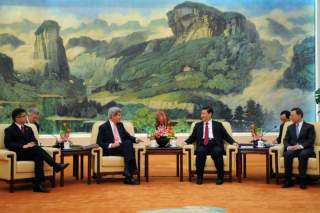America and China's Dangerous Game of Geopolitical Poker
Place your bets. The stakes could not be any higher.
Technology is the great equalizer
Technology is a game changer. Just as no one could foresee in 1990 how Internet will change everything, the rapid diffusion of disruptive technologies, such as 3D/4D printing, biotechnology, robotics, quantum computing etc. will be a game changer. What would a revolution in manufacturing based on 3D/4D printing mean for Made-in-China? Tomorrow’s technological breakthroughs will create new winners and losers.
Geopolitics and geology are closely interlinked. Just when China and the rest were writing off America as a declining power, the country finds itself on the cusp of achieving energy self-sufficiency, thanks to a breakthrough in fracking technology. The shale revolution could help the United States rejuvenate itself and prolong American dominance of the international order. The energy boom in the U.S. and Canada—if exploited fully has the potential to change the power dynamics among great powers and revitalize U.S. alliances. It could turn yesterday’s winners into tomorrow’s losers. Just as the “old” Middle East is “moving East” to forge closer energy ties with China and India, the “new Middle East” (comprising Canada and the United States) could be “looking West” to sell tight oil and gas to Japan, India, South Korea and Southeast Asian countries. The shale oil and gas bonanza would not only enhance American diplomatic leverage, but also make the world oil market more diversified, more stable for oil prices and reduce consumers’ overdependence on the volatile Middle East and Putin’s Russia.
The Future of Asian Geopolitics
These strategic trends will shape the future of Asian geopolitics. Power asymmetry among major powers means that each will form flexible ad hoc partnerships with the others as they compete, collide, coalesce and collude with each other when their objectives coincide. China is, of course, the most important piece of the geopolitical puzzle. No country threatens China today as it is presently constituted. As the largest (in terms of territory) and the most powerful (economically and militarily) country in Asia, should Beijing agree to freeze and accept territorial status quo along its land and maritime boundaries, it could unravel the Cold War-era alliances and undermine the raison d’etre of U.S. forward presence.
Since the prospects of the PLA accepting the territorial status quo seem nil, the question then facing the United States is how to sustain a robust balance of power that deters intimidation and aggression and reassures friends and allies faced with an overconfident and powerful China determined to establish its dominance on the continent and its adjoining waters. Peace and stability will prevail if major powers work for a multipolar Asia with inclusive multilateral institutions and dispute resolution mechanisms. However, competition, rivalry, and even conflict will result should bipolarity reemerge or should Beijing seek to reestablish a Sino-centric hierarchical order wherein the Middle Kingdom behaves in a hegemonic manner expecting obeisance and tribute from its neighbors.
Mohan Malik is a professor in Asian Security at Asia-Pacific Center for Security Studies, Honolulu and editor of Maritime Security in the Indo-Pacific (Rowman & Littlefield, forthcoming Oct. 2014) and author of China and India: Great Power Rivals (Lynne Rienner Publishers, 2011). These are author’s personal views.

